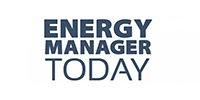 Amazon plans to deploy of large-scale solar systems on the rooftops of more 15 fulfillment and sortation centers – representing 41 MW of generation – nationwide this year, the Seattle-based company announced on March 2.
Amazon plans to deploy of large-scale solar systems on the rooftops of more 15 fulfillment and sortation centers – representing 41 MW of generation – nationwide this year, the Seattle-based company announced on March 2.
In addition, Jeff Bezos’ electronic commerce and media juggernaut will extend the initiative globally by 2020 – to 50 overseas fulfillment and sortation centers.
The initial solar projects planned for completion by the power up facilities in California, New Jersey, Maryland, Nevada, and Delaware.
Depending on the specific project, time of year, and other factors, a solar installation could generate as much as 80 percent of a single fulfillment facility’s annual energy needs, Amazon said. For example, solar panels installed on the rooftop of the Patterson, California, fulfillment center cover more than three-quarters of the 1.1 million- square-foot building’s.
Amazon’s recent renewable energy projects include the company’s largest wind farm to date, located in Texas. In addition, a network of wind and solar farms in Indiana, North Carolina, Ohio and Virginia are delivering energy onto the electric grid that powers Amazon Web Service data centers.
To date, Amazon has announced or commenced construction on projects which will generate a total of 3.6 million MW of renewable energy.
“As our fulfillment network continues to expand, we want to help generate more renewable energy at both existing and new facilities around the world in partnership with community and business leaders,” said Dave Clark, SVP of Worldwide Operations.
“We are putting our scale and inventive culture to work on sustainability—this is good for the environment, our business and our customers,” Clark added. “By diversifying our energy portfolio, we can keep business costs low and pass along further savings to customers. It’s a win-win.”
Click Here to Read Full Article
read more
 At first glance, renewable-energy sources like solar power and energy-storage battery packs seem like a logical match.
At first glance, renewable-energy sources like solar power and energy-storage battery packs seem like a logical match. You probably don’t think of China as a clean energy champion given its
You probably don’t think of China as a clean energy champion given its  Panasonic Corp will invest more than 30 billion yen ($256 million) in a New York production facility of Elon Musk’s Tesla Motors to make photovoltaic cells and modules, deepening a partnership of the two companies.
Panasonic Corp will invest more than 30 billion yen ($256 million) in a New York production facility of Elon Musk’s Tesla Motors to make photovoltaic cells and modules, deepening a partnership of the two companies. Sam Stranks, an experimental physicist at Cambridge University, is a firm believer in the power of solar energy to dramatically reduce global carbon emissions. “Solar could well be the solution to our energy needs and getting rid of emissions,” he says. “It’s an infinite source, but expensive to harvest.” Stranks thinks instead of just installing more solar panels, we should focus on making panels that are more efficient. One way to do that is to add a perovskite layer to today’s commercially available solar panels.
Sam Stranks, an experimental physicist at Cambridge University, is a firm believer in the power of solar energy to dramatically reduce global carbon emissions. “Solar could well be the solution to our energy needs and getting rid of emissions,” he says. “It’s an infinite source, but expensive to harvest.” Stranks thinks instead of just installing more solar panels, we should focus on making panels that are more efficient. One way to do that is to add a perovskite layer to today’s commercially available solar panels. The co-founder of a project that saw a solar-powered aircraft complete the first fuel-free flight around the world this year expects electric passenger planes to operate in just under 10 years.
The co-founder of a project that saw a solar-powered aircraft complete the first fuel-free flight around the world this year expects electric passenger planes to operate in just under 10 years. November 4 (SeeNews) – The government of Alberta, the Canadian province, will kick off its first renewable power competitive bidding process next year, seeking to procure up to 400 MW, it was announced on Thursday.
November 4 (SeeNews) – The government of Alberta, the Canadian province, will kick off its first renewable power competitive bidding process next year, seeking to procure up to 400 MW, it was announced on Thursday. Change is coming to the energy landscape. A transition to a new energy economy is happening. In a country like Australia – awash with energy both under and above the ground – this transition could be rapid and profound. There is a lot to lose for those who can’t keep pace.
Change is coming to the energy landscape. A transition to a new energy economy is happening. In a country like Australia – awash with energy both under and above the ground – this transition could be rapid and profound. There is a lot to lose for those who can’t keep pace. Energy Storage News – Costs of the clean energy tech will keep falling over the next decade.
Energy Storage News – Costs of the clean energy tech will keep falling over the next decade. In the U.S., utility-scale
In the U.S., utility-scale 



